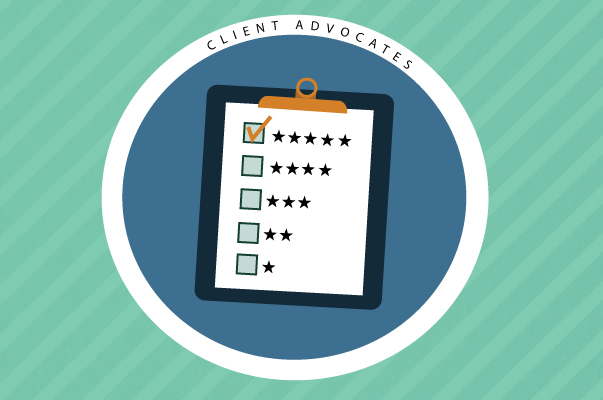I recently met with a college classmate of mine who started a new job working on a client success team with four other folks. All of them, he explained, have different areas of expertise and focus on the same group of clients. As the account manager, he leads the team, which consists of technical support staff as well as a software trainer and content coordinator. I was amazed by how successful their team was in not only answering client questions and fixing technical issues, but also in encouraging clients to do more and really push the bar with their campaigns.
What was even more impressive was the number of advocates his team had been credited with over the past few months. While client satisfaction plays a role in how they are compensated and in annual reviews, his employer is more interested in how many clients become advocates as a result of their relationship and interactions with their client success team.
What a concept! Customer advocates are the lifeblood of any business, whether it’s B2B or B2C. Advocates are repeat buyers, refer new business, provide great feedback and have your back when you’re not at the table to make your own case (or defend yourself). The key to creating customer advocates is building meaningful relationships.
Here are five ways your business can begin building customer advocates through client success:
Be responsive. When a client calls or emails a question or request, respond to it immediately. This doesn’t necessarily mean that you stop what you’re doing and focus entirely on their new issue. A response can be as simple as, “Good to hear from you. Sorry you ran into this issue. We’ll look into it and give you a call.” Let the client know you received their message and that you will get back to them.
Be accountable. If something happens and you or our team drops the ball, own it. Don’t blame shift and don’t make excuses. Come clean (the earlier the better) and let the client know what you’re doing to rectify and improve the situation.
Prove your worth. Understand your client’s goals and communicate regularly with them to explain how things are going, what’s working and what’s not. Additionally, communicate with all key stakeholders including the economic buyer and daily contact so everyone is aware of the work you are doing. Chances are, they won’t share information internally and you never want to be on the chopping block at budget time or if someone leaves the company.
Teach clients to fish. The client success team at ROI used to have a popular saying on the whiteboard alongside it’s end of the office: “Give a man a fish and you feed him for a day; teach a man to fish and you feed him for a lifetime.” The client success team here works hard to not only solve problems but also teach clients how to fix issues for themselves or even prevent them from happening in the first place. Always be teaching your clients how to be power users of your products or services so they can maximize their results.
Recognize achievements. We all want to be told we’ve done a good job. It’s human nature. Especially if we’re trying something for the first time. Be sure you let your clients know when they doing a great job. You can offer recognition as a client spotlight or even through company awards. By telling them they’re doing a great job, you’ll not only make them feel good but also reassure them that they’re on the right track.
By doing each of these five things, your company can improve usage as well as the overall customer experience – which is ever so much more important that customer satisfaction (and much harder to measure).
In the end, customer advocacy is really a partnership between your organization and its clients. A client who believes you’re in it for the long-term and that you care whether or not they succeed will begin to see your organization as a partner, not just another vendor. Building the foundation for the partnership begins with engagement.
How are you engaging with your customers today?

